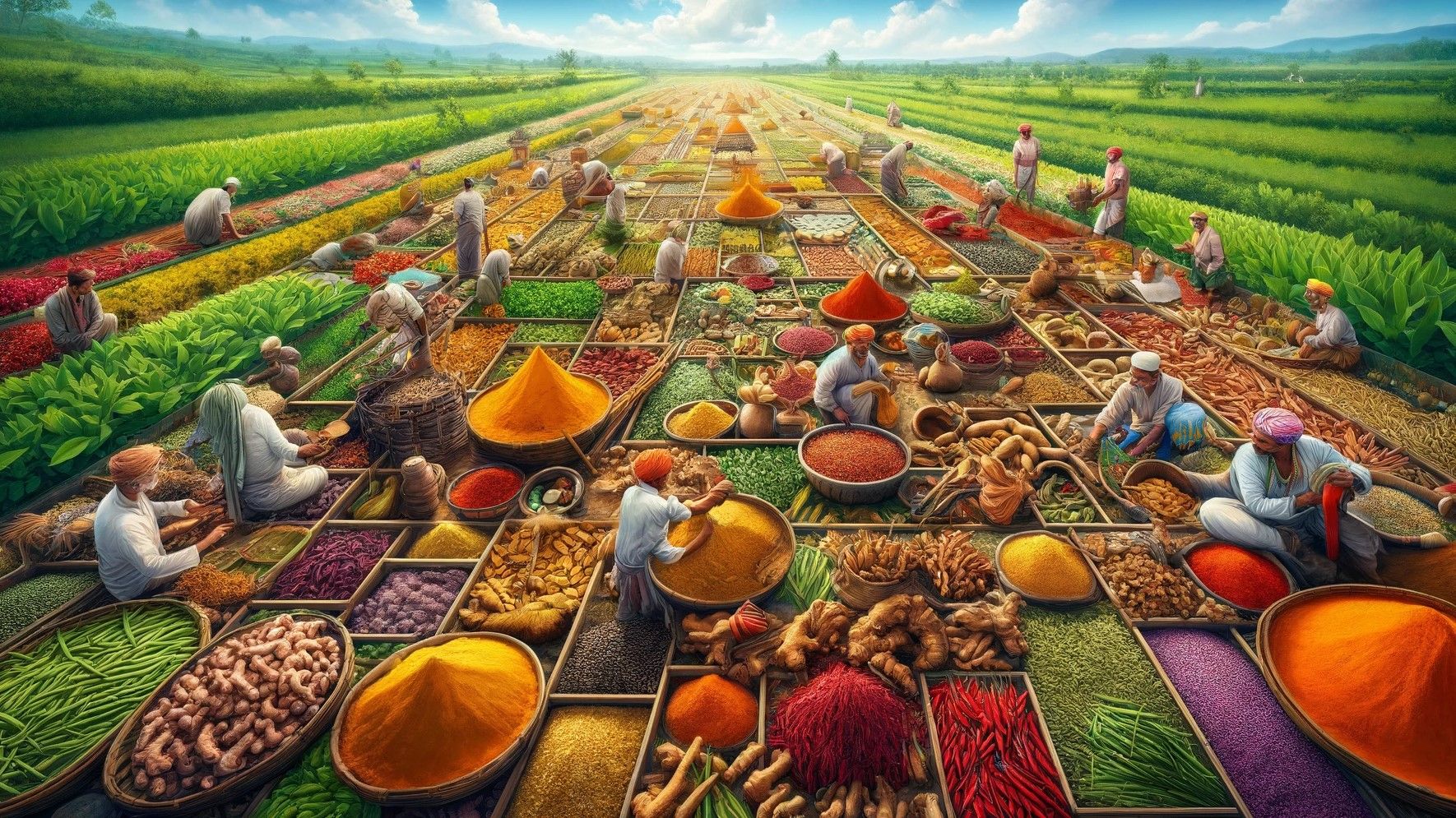
The Impact of Climate on the Quality of Spices
In the aromatic world of spices, where each pinch and dash can transform a dish into a culinary masterpiece, climate plays a crucial role in shaping not just the flavors but also the quality of these precious ingredients. From the sun-kissed fields of saffron to the lush rainforests where vanilla pods thrive, every spice tells a tale of its journey through the elements. Let’s delve into the fascinating interplay between climate and spice quality, uncovering the secrets hidden within each tiny seed, leaf, or pod.
The Sun’s Warm Embrace: Spices from Tropical Climates
Tropical climates, with their consistent warmth and ample rainfall, are the nurturing grounds for many beloved spices. Take, for instance, the vibrant hues and complex flavors of cinnamon. Originating from tropical regions like Sri Lanka, Indonesia, and Vietnam, cinnamon thrives in moist, humid environments. The warm sun encourages the growth of essential oils in the bark, infusing it with that signature sweet and spicy aroma.
Similarly, cloves, with their intense, pungent taste, flourish in tropical regions such as Madagascar, Tanzania, and Sri Lanka. The combination of ample rainfall and warmth helps cloves develop their potent flavor profile, making them a prized addition to both savory and sweet dishes.
Chilling Tales: Spices from Temperate Climates
On the other end of the spectrum are spices that hail from temperate climates, where the changing seasons lend a unique character to their flavors. Take the humble peppercorn, for example. Originating from regions like India, Vietnam, and Brazil, peppercorns thrive in climates with distinct wet and dry seasons. The dry periods allow the peppercorn berries to ripen and develop their sharp, spicy taste, while the wet seasons provide the necessary moisture for growth.
Another spice influenced by temperate climates is nutmeg. Found in countries like Indonesia, Grenada, and India, nutmeg trees require a balance of sun and shade, along with well-drained soil. The cool breezes and moderate temperatures of these regions contribute to the rich, warm flavor of nutmeg, making it a staple in both sweet and savory dishes.
Altitude Matters: Spices from High-Altitude Regions
Altitude adds another layer of complexity to the relationship between climate and spice quality. Take, for instance, the prized saffron threads, which come from the delicate stigma of the Crocus sativus flower. Cultivated in regions like Iran, India, and Spain, saffron thrives in high-altitude areas with dry, sunny days and cool nights. These conditions enhance the concentration of essential oils in the saffron threads, resulting in their distinctive flavor and aroma.
Similarly, the high-altitude coffee plantations of Ethiopia, Colombia, and Guatemala produce some of the world’s finest coffee beans. The cooler temperatures and ample rainfall at higher elevations slow down the coffee bean’s maturation process, allowing for more nuanced flavors to develop.
Climate Change and Spice Quality: Navigating Challenges
While the intricate dance between climate and spice quality has enriched culinary traditions for centuries, it also faces challenges in the era of climate change. Shifts in temperature patterns, unpredictable rainfall, and extreme weather events can disrupt the delicate balance that spices rely on for optimal growth and flavor development.
Farmers and spice producers are increasingly adopting sustainable practices and innovative techniques to mitigate these challenges. From water-efficient irrigation systems to agroforestry methods that promote biodiversity, there’s a growing emphasis on preserving the environments where spices thrive.
Embracing Spice Diversity: A Culinary Journey
As consumers and cooks, we have the privilege of exploring the vast diversity of spices shaped by climate and geography. Each spice tells a story of its origin, from the sun-drenched fields to the misty mountainsides, and invites us to embark on a culinary journey rich in flavors and traditions.
Next time you sprinkle cinnamon into your morning oatmeal or savor the warmth of a nutmeg-spiced dessert, take a moment to appreciate the intricate influence of climate on these culinary treasures. In every aroma and taste, we find a connection to the natural world and a celebration of the earth’s bounty
Conclusion
At EFGH, we are committed to providing only the finest, authentic Indian spices, directly sourced from trustworthy farmers and suppliers. Our rigorous selection process ensures that each spice we offer is fresh, flavorful, and free from unwanted additives. With the convenience of online shopping, you can explore our extensive collection from the comfort of your home and have your chosen spices delivered directly to your doorstep.
We pride ourselves on exceptional customer service. Our knowledgeable and friendly team is always ready to assist you, whether you are making a purchase or have questions about a specific spice. We strive to deliver an unparalleled shopping experience, addressing your needs quickly and professionally.
Are you ready to elevate your cooking and health with the rich flavors and nutritional benefits of spices? Visit EFGH today and start your flavorful journey to a healthier lifestyle!




